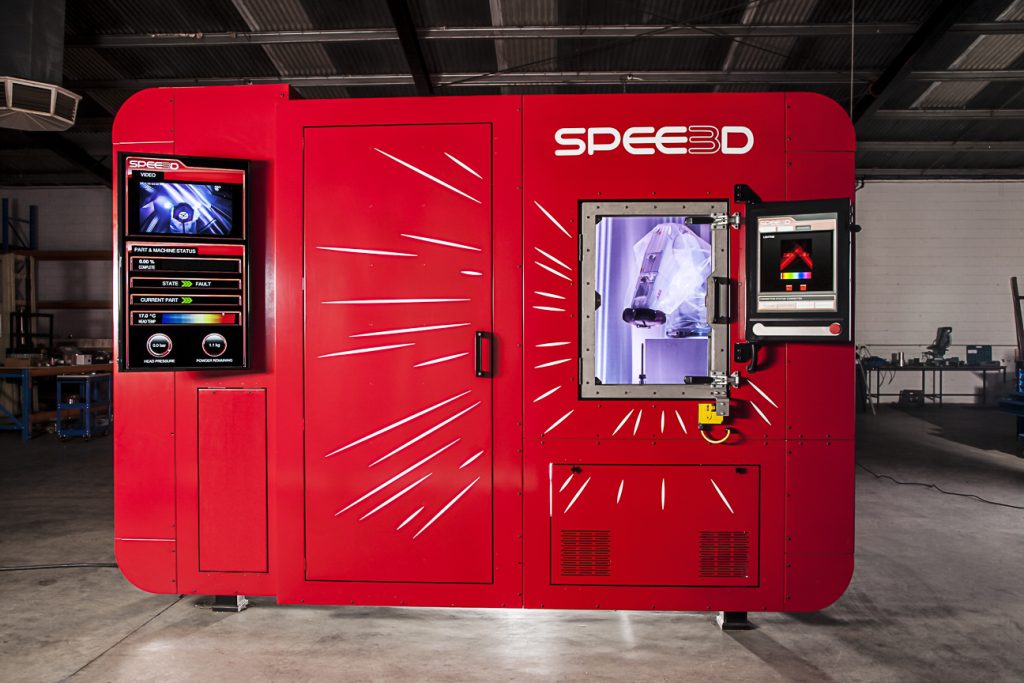SPEE3D, an Australian metal 3D printer manufacturer, will work with Charles Darwin University to assist the Australian Army. The news was announced by Australian Minister of Defence Industry, the Hon. Melissa Price MP.
The AUD $1.5 million project aims to train twenty soldiers in advanced additive manufacturing.
A SPEE3D WarpSPEE3D additive manufacturing system will be installed at Darwin’s Robertson Barracks while training on the system will take place at the university as part of a 12-month pilot program.
Byron Kennedy, CEO of SPEE3D, said, “This program with the Australian Army, in parallel with a similar project with the Royal Australian Navy announced in November last year, will enable the Australian Defence Force to grow our sovereign capability and lead the world in the field of additive manufacturing.”

Preparing for the “future battlefield”
The 20 soldiers who will receive training come mainly from 1st Combat Service Support Battalion (1 CSSB). According to Lieutenant Colonel Kane Wright, Commanding Officer 1 CSSB, the project demonstrates how the Australian Army is focused on keeping up with technology.
The proposal was initiated by 1 CSSB in 2019 with the goal to improve ADF supply chain resilience. “At maturity we see it becoming an essential enabler that will redefine how logistics is employed to support our dependencies on the future battlefield,” said Lieutenant Colonel Wright.
“This will reduce the requirement to deploy with bulky holdings of multiple repair parts, hence increasing mobility and survivability and reducing time waiting for new parts to create greater resilience in the supply chain.”
DU Vice-Chancellor and President, Professor Simon Maddocks, said “This 3D printing technology has the potential to change the way many industries, including Defence, design, manufacture and supply parts. CDU has become a centre of excellence in exploring and applying this new technology and we’re pleased to have such eager professional soldiers join us to learn this new skill set.”
One of the soldiers receiving the training is 1 CSSB Fitter Lance Corporal Sean Barton. “This is a very exciting opportunity for me and very different from my regular trade as a Fitter,” Lance Corporal Barton said.
“I am looking forward to getting my hands on the software, learning about the design process and being one of the first to learn how to use the technology – it’s pretty cool.”
3D printing in the armed forces supply chain
SPEE3D has already worked with CDU to streamline patrol vessel maintenance for the Royal Australian Navy. Elsewhere, the French Army recently installed ProMaker P1000 3D printers from French industrial 3D printer provider Prodways to manufacture spare parts.
Last year, U.S. Army Secretary Ryan McCarthy issued a directive placing 3D printing at the center of its modern policy. U.S. Army Corps of Engineers (USACE) is building bases using 3D printed cement with the Marine Corps Systems Command (MCSC). The Army Research Laboratory (ARL) is also developing high-strength alloys for 3D printing.
Nominations for the 2020 3D Printing Industry Awards are now open. Who do you think should make the shortlists for this year’s show? Have your say now.
Subscribe to the 3D Printing Industry newsletter for the latest news in additive manufacturing. For more content, follow us on Twitter and like us on Facebook.
On our 3D Printing Jobs Board you can apply for a selection of roles in the additive manufacturing industry for free.
Featured image shows SPEE3D metal additive system.


